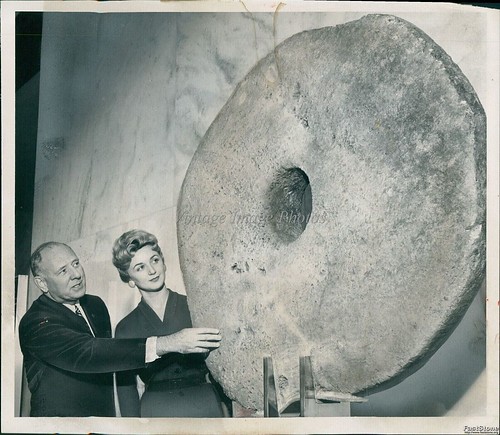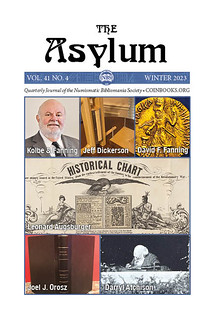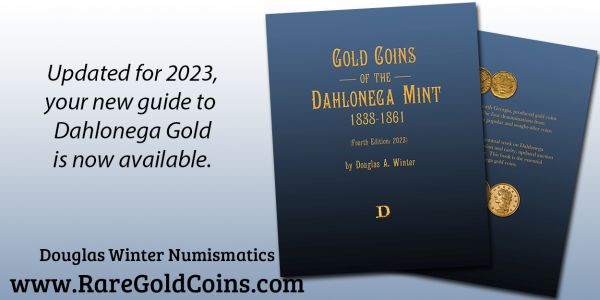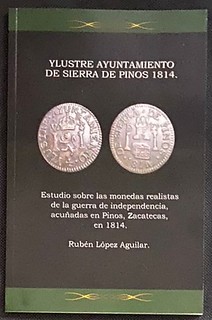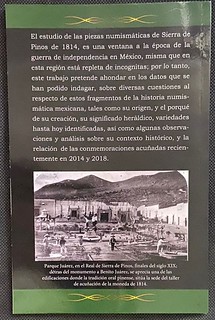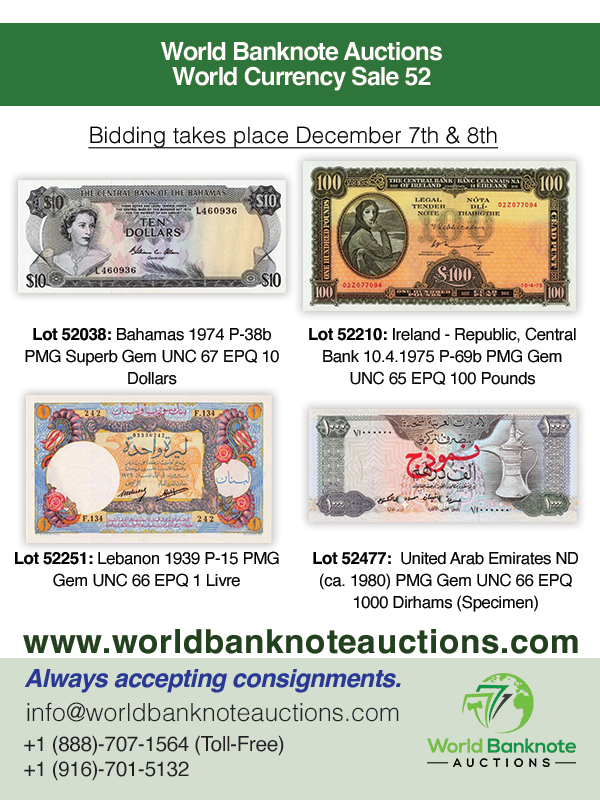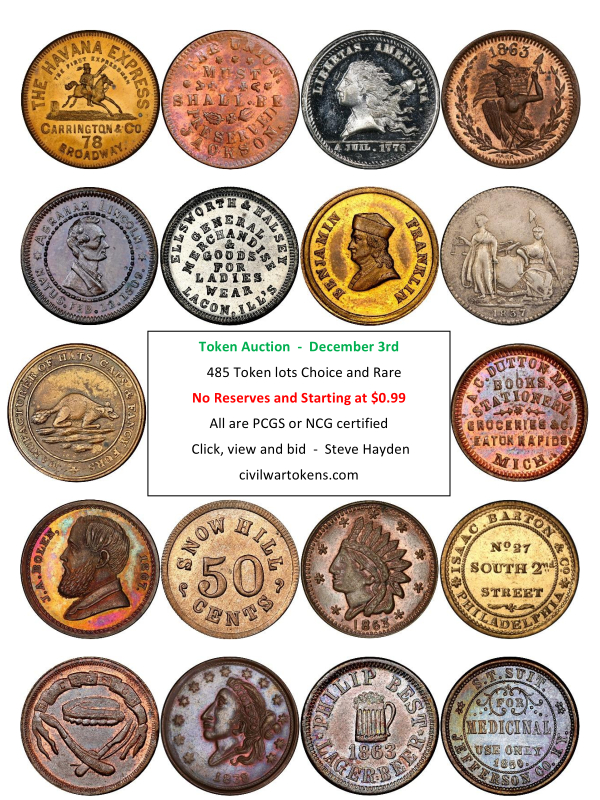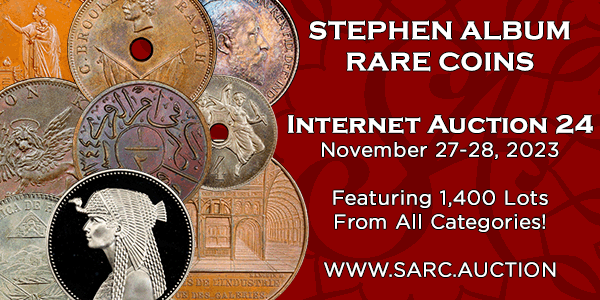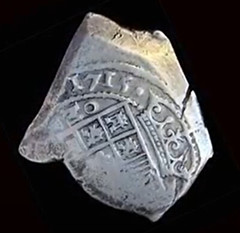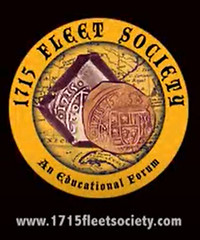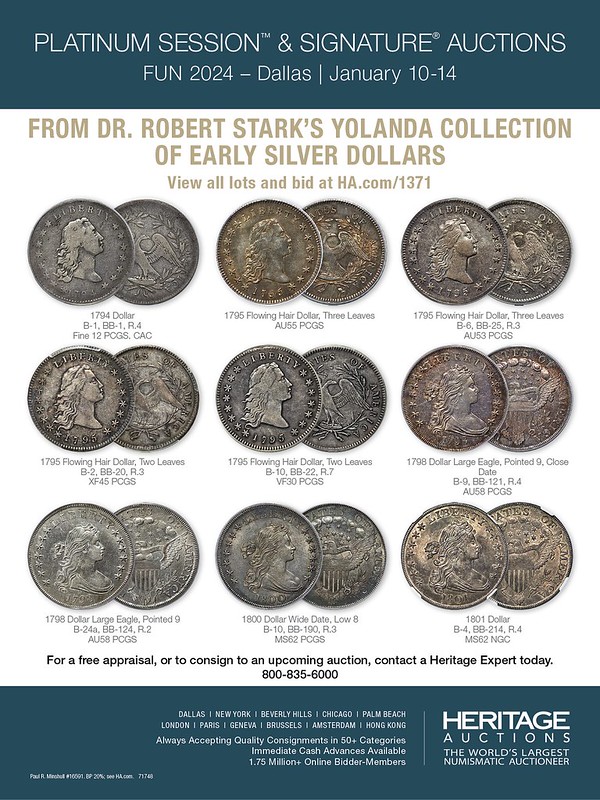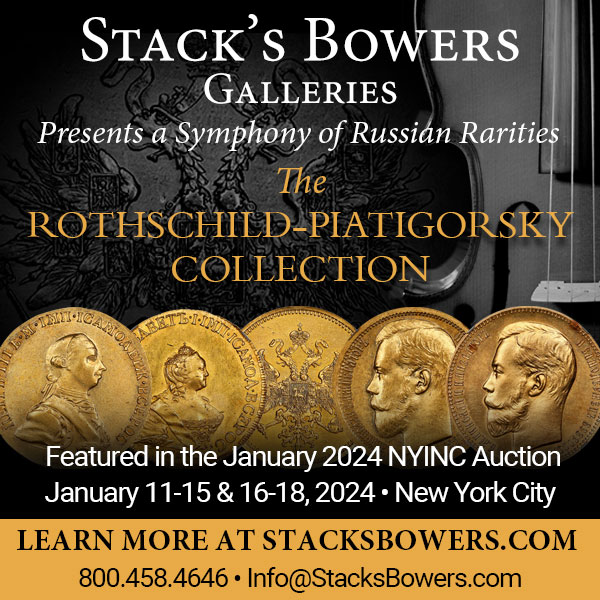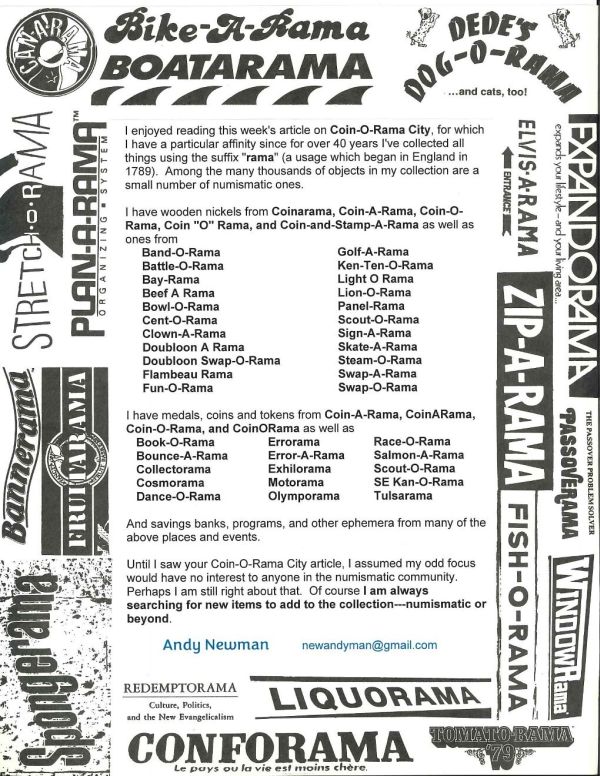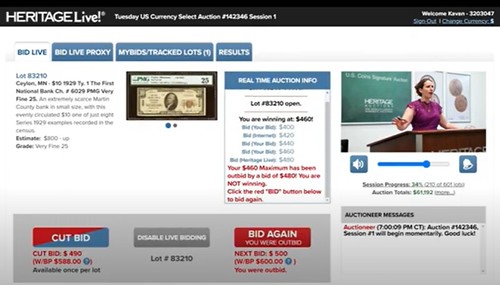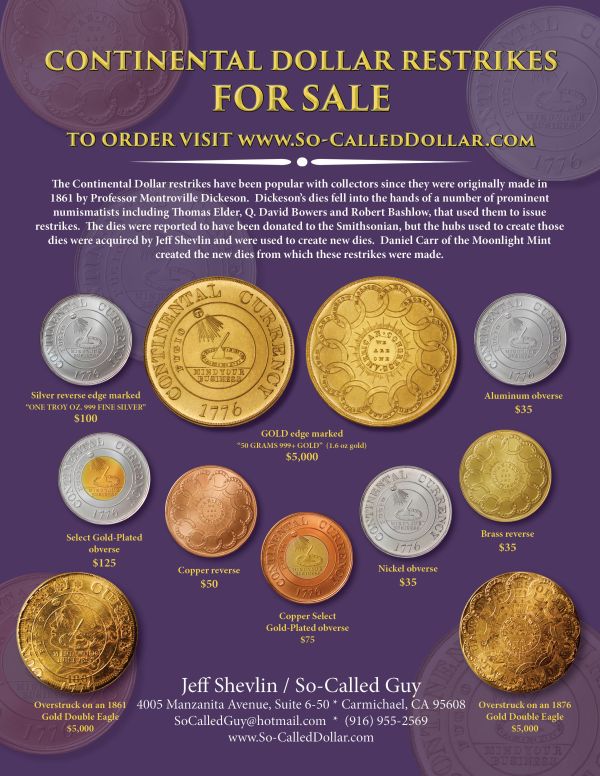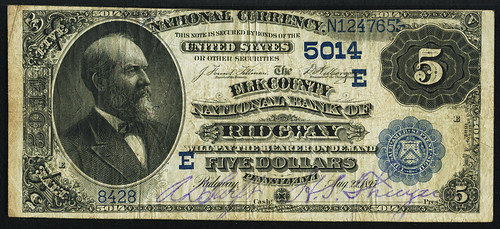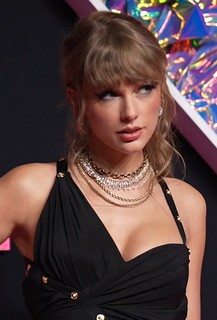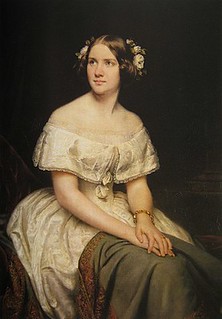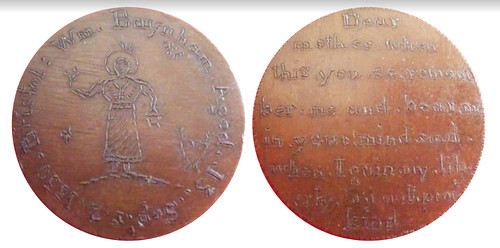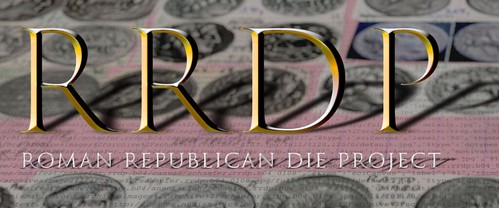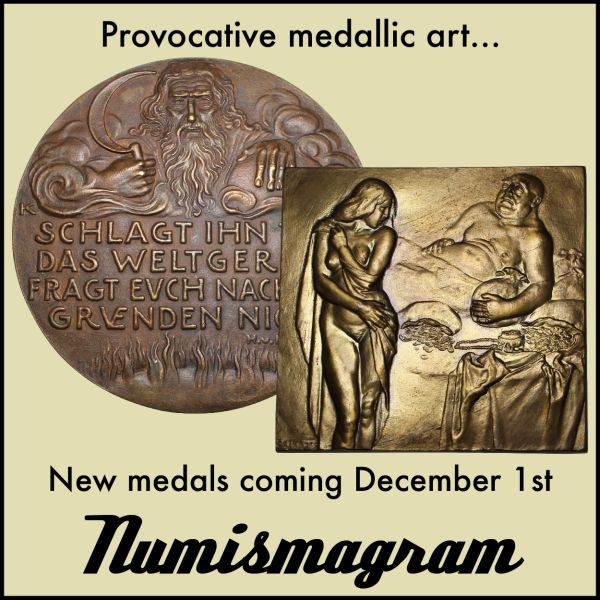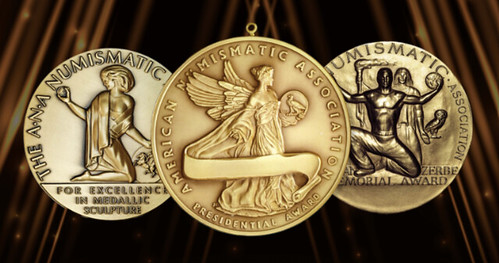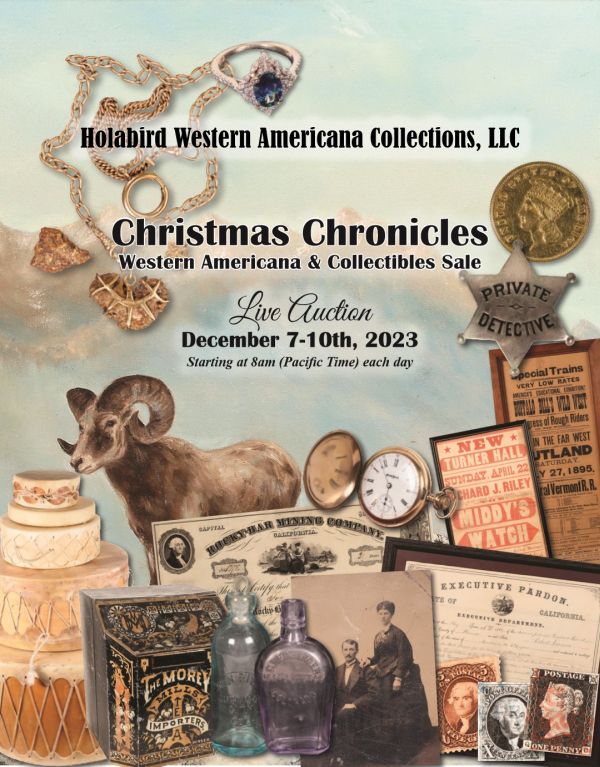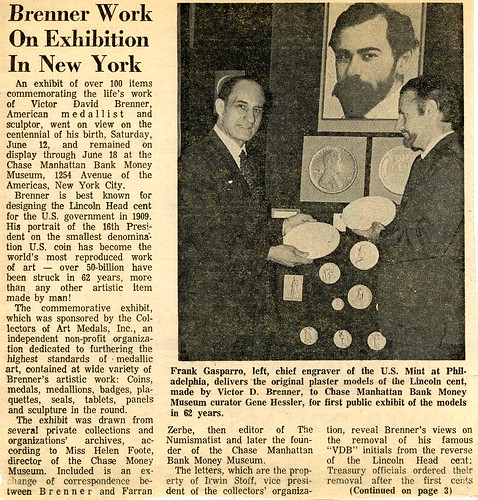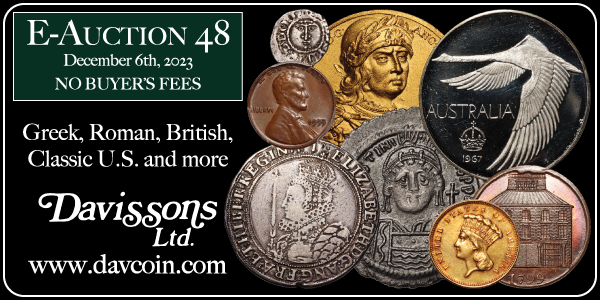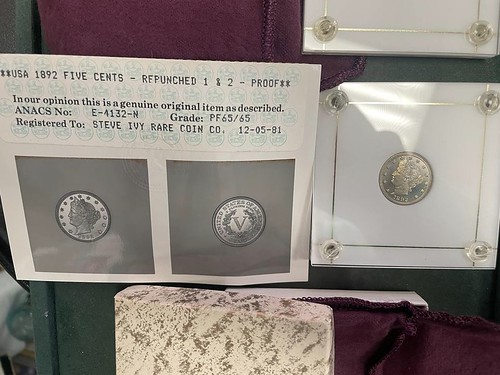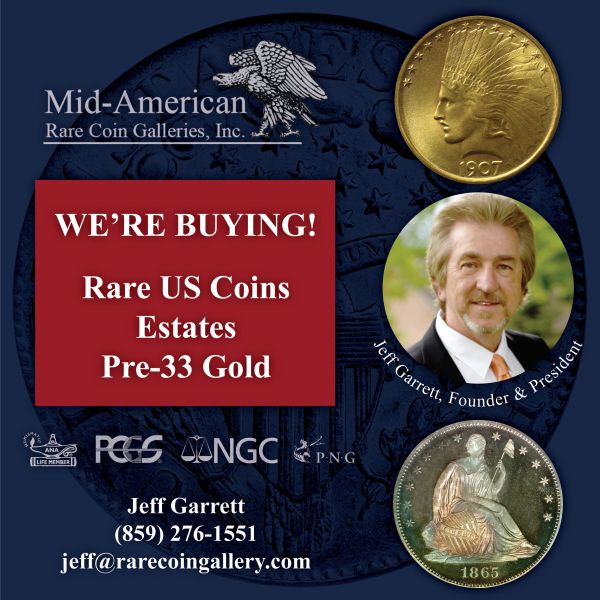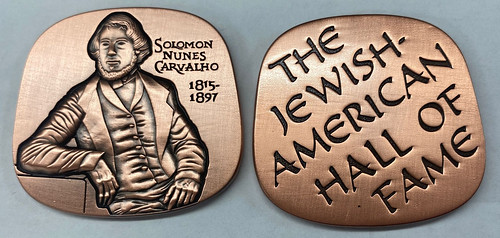
Visit our NBS Sponsors




About UsThe Numismatic Bibliomania Society is a non-profit association devoted to the study and enjoyment of numismatic literature. For more information please see our web site at coinbooks.org SubscriptionsThose wishing to become new E-Sylum subscribers (or wishing to Unsubscribe) can go to the following web page link MembershipThere is a membership application available on the web site Membership Application To join, print the application and return it with your check to the address printed on the application. Print/Digital membership is $40 to addresses in the U.S., and $60 elsewhere. A digital-only membership is available for $25. For those without web access, write to: Jeff Dickerson, Treasurer AsylumFor Asylum mailing address changes and other membership questions, contact Jeff at this email address: treasurer@coinbooks.org SubmissionsTo submit items for publication in The E-Sylum, write to the Editor at this address: whomren@gmail.com BUY THE BOOK BEFORE THE COINSale Calendar |
- WAYNE'S WORDS: THE E-SYLUM NOVEMBER 26, 2023
- ASYLUM WINTER 2023 ISSUE PUBLISHED
- VILA RICA MOEDAS AUCTION 19 LITERATURE
- NEW BOOK: LE FRANC - NAPOLEON I
- NEW BOOK: SIERRA DE PINOS 1814
- NEW BOOK: DR ANDREW COLTEE DUCAREL
- NEW BOOK: COIN COLLECTING STRATEGIES
- HARVEY B. RICHER (1944-2023)
- DAHLONEGA MINT GOLD COIN ANALYSIS
- VIDEO: 1715 FLEET SOCIETY
- TRANSCRIPTIONS RELATED TO PUERTO RICAN COINAGE
- TITANIC VICTIM JOHN GILL'S HALF DOLLAR
- EVERYTHING-O-RAMA
- THE AGE OF THE AI AUCTIONEER?
- NOTES FROM E-SYLUM READERS: NOVEMBER 26, 2023
- THE TOKEN CORRESPONDING SOCIETY
- ROMAN REPUBLICAN DIE PROJECT CONFERENCE
- ANA SEEKS 2024 AWARD NOMINATIONS
- VOCABULARY TERM: OVAL MEDAL
- SHAPERO, DODSON AND THEIR MONEY MUSEUM
- CHASE MANHATTAN MUSEUM BRENNER EXHIBIT
- COL. GREEN AND THE INVERTED JENNYS
- DAVID SCHENKMAN INTERVIEW, PART FOUR
- CIRCA 1981 ANACS GRADING CERTIFICATES
- DAVISSONS E-AUCTION 48: ROMAN PORTRAITS
- WAYNE'S NUMISMATIC DIARY: NOVEMBER 26, 2023
- MUSEUM RECLASSIFIES EMPEROR ELAGABALUS
- ROYAL CANADIAN MINT ISSUES CHARLES COINS
- 54TH JEWISH-AMERICAN HALL OF FAME MEDAL ISSUED
- FREIGELD: MONEY THAT EXPIRES
- THE CASHLESS CONSPIRACY DISTRACTION
- NFL THANKSGIVING COIN-TOSS KERFUFFLE
Content presented in The E-Sylum is not necessarily researched or independently fact-checked, and views expressed do not necessarily represent those of the Numismatic Bibliomania Society.
WAYNE'S WORDS: THE E-SYLUM NOVEMBER 26, 2023
 New subscribers this week include:
Bruce B.
Welcome aboard!
New subscribers this week include:
Bruce B.
Welcome aboard!
Thank you for reading The E-Sylum. If you enjoy it, please send me the email addresses of friends you think may enjoy it as well and I'll send them a subscription. Contact me at whomren@gmail.com anytime regarding your subscription, or questions, comments or suggestions about our content.
This week we open with a new issue of our print journal, a numismatic literature sale, four new books, an obituary, updates from the Newman Numismatic Portal, reader comments and more.
Other topics this week include the Dahlonega Mint, the 1715 Fleet, coins from the Titanic, oval medals, the Money Museum of the National Bank of Detroit, Victor David Brenner, ANACS grading certificates, Emperor Egalabalus, and Money That Expires.
To learn more about the Hart plate of early American paper money, Brazilian medals, French essays, Puerto Rican coinage, Jenny Lind, the Token Corresponding Society, Nate Shapero, Oscar Dodson, Solomon Carvalho, hard rubber tokens, auction previews, and the King Charles Canadian cent, read on. Have a great week, everyone!
Wayne Homren
Editor, The E-Sylum
ASYLUM WINTER 2023 ISSUE PUBLISHED
The Winter 2023 issue of The Asylum is on the way from our sponsor, the Numismatic Bibliomania Society. Maria Fanning edits our print journal, and she submitted this report. Thank you. -Editor
Welcome to The Asylum's Winter 2023 digital edition.
- George Kolbe Retires From Bookselling By Kolbe &Fanning
- A Bookbinder’s Journey, Part 2: Putting It Together By Jeff Dickerson
- Book Review: Kushan Mystique By David Jongeward Reviewed by David F. Fanning
- The Hart Plate of Early American Paper Money By Leonard Augsburger
- ASSOCIATIONS • Autographs • Annotations • Inscriptions: The Robert D. Bruce Copy of the Supplemented Manual of Gold and Silver Coins of all Nations: The Banquo’s Ghost of American Numismatics By Joel J. Orosz
- The Ugliest Book in my Library and a Life Less Ordinary By Darryl A. Atchison, F.C.N.R.S.
- History of the Coin Circulation in Cuba By Roberto Menchaca García
VILA RICA MOEDAS AUCTION 19 LITERATURE
There are several lots of numismatic literature in the upcoming Auction 19 from Vila Rica Moedas in São Paulo, Brazil. Here's the literature section of their recent press release. -Editor
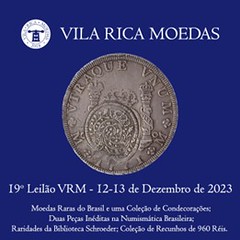 Vila Rica will hold its Auction 19 on December 12th and 13th. The auction is internet-only and split over two sessions. It will offer a vast range of Brazilian coins and decorations from Colonial to Republican issues. including a selection of rare books from the Cláudio Schroeder Library, including the famous “Catálogo de Medalhas Brazileiras e das Estrangeiras Referentes ao Brazil” (Catalog of Brazilian and Foreign Medals Referring to Brazil), by the Viscountess of Cavalcanti, as well as a catalog by the same Viscountess, previous to this one, extremely rare (only 25 printed copies) and missing in the vast majority of the most advanced libraries.
Vila Rica will hold its Auction 19 on December 12th and 13th. The auction is internet-only and split over two sessions. It will offer a vast range of Brazilian coins and decorations from Colonial to Republican issues. including a selection of rare books from the Cláudio Schroeder Library, including the famous “Catálogo de Medalhas Brazileiras e das Estrangeiras Referentes ao Brazil” (Catalog of Brazilian and Foreign Medals Referring to Brazil), by the Viscountess of Cavalcanti, as well as a catalog by the same Viscountess, previous to this one, extremely rare (only 25 printed copies) and missing in the vast majority of the most advanced libraries.
NEW BOOK: LE FRANC - NAPOLEON I
Laurent Schmitt submitted this announcement of a new book series in French and in English about French essays. The first volume covers Napoleon I (1803-1815). Thank you. -Editor
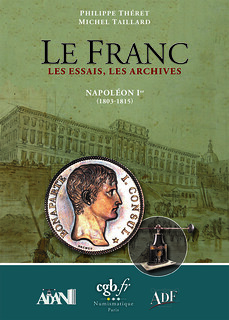 Philippe Théret and Michel Taillard supported by the associations ADF (Friends of the Franc) and ADAN
(Friends of Numismatic Authors) have worked to provide collectors and professionals with new tools to
approach the fascinating field of French essays of the period 1803 to 1870. That is to say from the creation of
the Germinal Franc under Napoleon Bonaparte to the fall of Napoleon III.
Philippe Théret and Michel Taillard supported by the associations ADF (Friends of the Franc) and ADAN
(Friends of Numismatic Authors) have worked to provide collectors and professionals with new tools to
approach the fascinating field of French essays of the period 1803 to 1870. That is to say from the creation of
the Germinal Franc under Napoleon Bonaparte to the fall of Napoleon III.
The field of essays is wide: coin design contest essays, design trials, splashers, trial strikes, patterns, branch mint trials, political propaganda essay strikes (Napoleon II, Henri V...), presentation strikes for dignitaries, proof strikes, restrikes for collectors, Mint Visit strikes (Paris mint and branch mints)...
A collection of six volumes (one per period) are in preparation since mid 2021.
NEW BOOK: SIERRA DE PINOS 1814
Adrián González-Salinas of Monterrey, N.L. Mexico shared this information about a new numismatic book on the royalist coins of the Mexican War of Independence. Thank you! -Editor
Title: Ylustre Ayuntamiento de Sierra de Pinos 1814 - Estudio sobre las monedas realistas de la guerra de independencia, acuñadas en Pinos, Zacatecas, en 1814
[Illustrious City Council of Sierra de Pinos (*) 1814 - Study on the royalist coins of the War of Independence, minted in Pinos, Zacatecas, in 1814]
NEW BOOK: DR ANDREW COLTEE DUCAREL
Gil Parsons passed along word of a new book on the life of numismatic author Dr Andrew Coltée Ducarel with an essay by Andrew Burnett on his numismatic pursuits. He also suggested the Wikipedia and Google Books links shown below. Thank you! As time goes on we are learning more and more about the great numismatists of the past. I added images of Ducarel's 1757 work on coins of the Kings of England. -Editor
‘I do not eat the bread of idleness’: Dr Andrew Coltée Ducarel 1713–1785, Huguenot, Lawyer, Librarian, Numismatist, and Antiquary.
MYERS, Robin, Andrew BURNETT, and Renae SATTERLEY.
The Garendon Press, 2023.
£45
Approximately:
US $56 €51
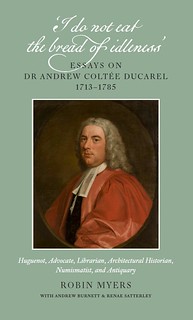 This volume brings together revised versions of four of Robin Myers’s papers on aspects of Ducarel’s life and work published between 1994 and 2002, and ‘The Life and Times of the Ducarel Brothers’, her recent introductory essay to Two Huguenot Brothers: Letters of Andrew and James Coltée Ducarel, 1732–1773 (The Garendon Press, 2019), which has been updated with a section by Adam Pollock on the life of the Ducarel children among other Huguenot families in Greenwich. It also contains new essays by Robin Myers on the collaboration and developing friendship between Ducarel and Philip Morant (1700–1770), historian of Essex, and on Doctors’ Commons, an institution whose name most know but few understand. To complement these Renae Satterley, Librarian of the Middle Temple, contributes an essay on Doctors’ Commons Library, and Andrew Burnett, former Keeper of Coins and Medals at the British Museum, on Ducarel as numismatist. The appendix comprises a family tree from Ducarel to the present day, an annotated list of works of Andrew Ducarel, a timeline of Ducarel’s life, and bibliography. Penelope Bulloch, Christine Ferdinand, and Lorren Boniface helped to edit the work.
This volume brings together revised versions of four of Robin Myers’s papers on aspects of Ducarel’s life and work published between 1994 and 2002, and ‘The Life and Times of the Ducarel Brothers’, her recent introductory essay to Two Huguenot Brothers: Letters of Andrew and James Coltée Ducarel, 1732–1773 (The Garendon Press, 2019), which has been updated with a section by Adam Pollock on the life of the Ducarel children among other Huguenot families in Greenwich. It also contains new essays by Robin Myers on the collaboration and developing friendship between Ducarel and Philip Morant (1700–1770), historian of Essex, and on Doctors’ Commons, an institution whose name most know but few understand. To complement these Renae Satterley, Librarian of the Middle Temple, contributes an essay on Doctors’ Commons Library, and Andrew Burnett, former Keeper of Coins and Medals at the British Museum, on Ducarel as numismatist. The appendix comprises a family tree from Ducarel to the present day, an annotated list of works of Andrew Ducarel, a timeline of Ducarel’s life, and bibliography. Penelope Bulloch, Christine Ferdinand, and Lorren Boniface helped to edit the work.
NEW BOOK: COIN COLLECTING STRATEGIES
This new title showed up in our Facebook feed this week. It's available in hardbound, softbound and electronic formats. Here's the description from Amazon. -Editor
Unravel the global journey of numismatics, connecting readers with the diverse cultures, histories, and artistry encapsulated in each coin. Learn about some of the most valuable and hard-to-find coins in the world.
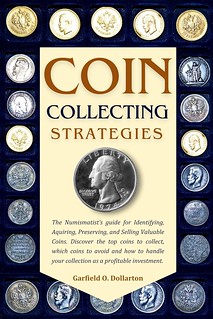 This guide is suitable for both beginners and experienced collectors. It is a treasure chest full of insights, stories, and practical advice for building your own collection.
This guide is suitable for both beginners and experienced collectors. It is a treasure chest full of insights, stories, and practical advice for building your own collection.
- Explore the joys of building a coin collection
- Covers everything you need to know about numismatics
- Learn a myriad of methods for acquiring coins.
- A dedicated chapter unveils the collector's language, shedding light on the unique terms and slangs used within the numismatic community.
- From navigating online marketplaces to attending coin shows and joining clubs, readers gain an understanding of acquisition methods.
Discover Specialized coin-collection strategies, from error coins to exonumia, we cover the top coins to collect, providing insight into their unique appeal and characteristics.
HARVEY B. RICHER (1944-2023)
Astronomer and numismatic author Harvey B. Richer passed away earlier this month. Sorry to hear the news. Here's an excerpt from his online obituary. -Editor
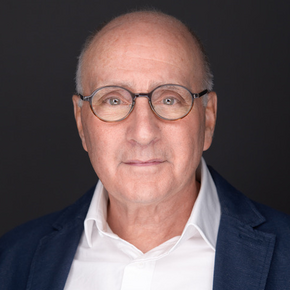 It is with profound sadness that we announce the passing of Professor Harvey Brian Richer, on Monday, November 13, 2023.
It is with profound sadness that we announce the passing of Professor Harvey Brian Richer, on Monday, November 13, 2023.
Harvey was born and raised in Montreal but relocated to British Columbia in the early 1970s. Harvey was a Professor of Physics and Astronomy at UBC for over 50 years and passionately devoted his time to exploring the cosmos. He reveled in collaborating with his peers both locally and globally to further our understanding of the evolution of stellar astrophysics. An avid lover of the arts, numismatics, astronomical outreach programs and the pursuit of athletics, Harvey had a profound impact on the lives of everyone he encountered and will be deeply missed by his family, colleagues and dear friends.
THE BOOK BAZARRE
DAHLONEGA MINT GOLD COIN ANALYSIS
In this report, Newman Numismatic Portal Project Coordinator Len Augsburger reviews an analysis of the Fairmont Collection in the new edition of Doug Winter’s Gold Coins of the Dahlonega Mint, 1838-1861 -Editor
Analysis of the Fairmont Collection of U.S. Gold Coins
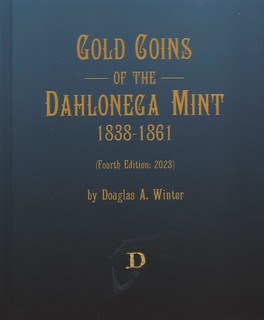 It’s rare that a single chapter of a new book demands its own review, but Doug Winter’s recent publication, Gold Coins of the Dahlonega Mint, 1838-1861 (Fourth Edition) represents such an example. As nearly all collectors of U.S. gold coins know, Stack’s Bowers has been offering selections from the Fairmont collection in a series of sales since 2018. The origin of the collection remains unknown, and no comprehensive inventory has been released. A plausible speculation suggests the source is a European or Canadian bank. The total size of the collection, and the number of remaining Stack’s Bowers sales, remains a mystery.
It’s rare that a single chapter of a new book demands its own review, but Doug Winter’s recent publication, Gold Coins of the Dahlonega Mint, 1838-1861 (Fourth Edition) represents such an example. As nearly all collectors of U.S. gold coins know, Stack’s Bowers has been offering selections from the Fairmont collection in a series of sales since 2018. The origin of the collection remains unknown, and no comprehensive inventory has been released. A plausible speculation suggests the source is a European or Canadian bank. The total size of the collection, and the number of remaining Stack’s Bowers sales, remains a mystery.
Richard Radick, a retired Air Force astrophysicist, has intensely studied Stack’s Bowers auction records, PCGS and CAC population reports, and other data to glean insights into the Dahlonega half eagles in the Fairmont collection. What happens when a rocket scientist focuses their attention on the rare coin market? The answer is found In Winter’s latest book, for which Radick contributes a ten-page essay that should be mandatory reading for anyone making purchases from the Fairmont sales.
VIDEO: 1715 FLEET SOCIETY
The David Lisot Video Library on the Newman Numismatic Portal can be found at:
https://nnp.wustl.edu/library/multimediadetail/522852
We highlight one of his videos each week in The E-Sylum. Here's one from 2017 with Ben Costello speaking about the 1715 Fleet Society. -Editor
TRANSCRIPTIONS RELATED TO PUERTO RICAN COINAGE
Ángel Navarro writes:
"Here is a link to a transcription of documents found at the National Archives. The access to these documents was thanks to Mr. Roger W. Burdette and Mr. Len Augsburger who were really kind and sent me a copy of the original documents for me to use for research. They are related to Puerto Rican numismatics and the U.S. Mint. Currently I am working on a research article using these documents. I sent the transcription to NNP so that other numismatists can do their own research using them."
Roger's work at the National Archives is important and groundbreaking. Just getting in there to manually search through box after box after dusty box is tedious and just the beginning. Once useful handwritten documents are located they must be scanned and transcribed before they can be fully discoverable and useable by researchers. But the Newman Numismatic Portal platform makes this great resource accessible to researchers everywhere. Here are some documents as examples of the great information found in this latest batch. Thanks, Ángel! -Editor
TITANIC VICTIM JOHN GILL'S HALF DOLLAR
Julia Casey writes:
"I just read your fascinating Titanic auction find story and when I put some terms into Google to see if there was any info about price etc. I found this -- and it was on Pawn Stars!"
Julia found a sale record for Gill's half dollar. "$4.60 in United States silver" was recovered from his body. Here's the lot description. The coin sold for $20,974 with Buyers Premium. -Editor
EVERYTHING-O-RAMA
Andy Newman writes:
"I enjoyed reading this week's article on Coin-O-Rama City, for which I have a particular affinity since for over 40 years I've collected all things using the suffix "rama" (a usage which began in England in 1789). Among the many thousands of objects in my collection are a small number of numismatic ones. I am always searching for additional items to add to the collection---numismatic or beyond."
Andy supplied this list and photos of selections of wooden nickels, tokens, medals and ephemera from his extensive collection. Thanks! Andy can be reached at newandyman@gmail.com . -Editor
THE AGE OF THE AI AUCTIONEER?
Kavan Ratnatunga of Sri Lanka writes:
"I attended a US Heritage Auction online and there was no video stream of the auctioneer. All I saw were still images of auctioneers which kept changing in rotation and the audio was clearly computer generated. What I did not expect was audio and screen output specific to me when I was actually bidding urging me to bid to win. I am curious if there is also a Real Live Floor Auction with a real Auctioneer, or if it is all done by computer using AI. I even saw it switch back on rare occasions to a just-closed lot when a late bid came just after it closed.
"Have you experienced this online auction format? See my unlisted recording https://youtu.be/1FbMvk0D2VI ."
NOTES FROM E-SYLUM READERS: NOVEMBER 26, 2023
Taylor Swift and Jenny Lind
"I loved the old Swiftie on the $5 bill.
"I'll put a mention of it in Scripophily as an alert to be diligent in searching officer signatures on stocks and bonds. They may have famous progeny!
"Can you imagine what that crusty old dude would think about the thing his great-granddaughter does for a living"?"
While Archie Swift was born long after the heyday of singer Jenny Lind, he likely would have been familiar with the career of the "Swedish Nightingale" and her extraordinarily popular concert tour of the U.S., where her 93 large-scale concerts earned more than $350,000 (equivalent to over $12 million today). The numismatics of Jenny Lind could be the topic of a whole 'nother thread. -Editor
For more information on Jenny Lind, see:
https://en.wikipedia.org/wiki/Jenny_Lind
To read the earlier E-Sylum article, see:
TAYLOR SWIFT AND NUMISMATICS
(https://www.coinbooks.org/v26/esylum_v26n47a12.html)
Other topics this week include Numi, and Augustin Dupre. -Editor
THE TOKEN CORRESPONDING SOCIETY
Julia Casey writes:
"I'm a member of the Conder Token Collectors Club. As part of that membership, I received a lovely gift of a free electronic copy of the Token Corresponding Society Bulletin published by their UK sister club. I spoke to President Jeff Rock in Baltimore last week and told him how much I enjoyed the article by Andrew Wager in the September issue "A Bristol Convict Token of 1830 from a Local “Workshop." "
ROMAN REPUBLICAN DIE PROJECT CONFERENCE
The American Numismatic Society the fourth phase of the Roman Republican Die Project together with a conference on the topic. Here's the press release. -Editor
The Roman Republican Die Project (RRDP), which seeks to create a digital repository of Roman republican coin dies based on the archive of Dr. Richard Schaefer, is excited to announce the fourth phase of work sponsored by a generous grant from the Arete Foundation. The primary goal of this final phase is to demonstrate how RRDP informs current scholarship and encourages new research collaborations. The two-year grant will fund the full-time work of the lead researcher, Dr. Alice Sharpless, on the project through the American Numismatic Society until June 2025. The Arete Foundation has provided additional funding to bring leading scholars together at a conference hosted by the American Academy in Rome (AAR) from April 9-11, 2025. The conference will culminate with an open-access volume of the Supplements to the Memoirs of the American Academy in Rome (SMAAR).
ANA SEEKS 2024 AWARD NOMINATIONS
The ANA is seeking nominations for 2024 awards and Numismatic Hall of Fame "Historic Era" candidates. Here's the announcement. -Editor
Deadline for Award Nominations is January 15
Each year, the American Numismatic Association (ANA) presents awards to deserving individuals in recognition of outstanding dedication to numismatics. The ANA is now accepting individual nominations for 2024 awards and Numismatic Hall of Fame "Historic Era" candidates.
All nominations can be submitted in writing and online – 300 words or more for the Numismatic Hall of Fame, and 50-100 words for all other awards. Include the date of submission, the nominee's name, background information and birth date (if known). Nominations are accepted through January 15, 2024.
VOCABULARY TERM: OVAL MEDAL
Here's another entry from Dick Johnson's Encyclopedia of Coin and Medal Terminology. I added a medal image. -Editor
Oval Medal. An ellipsoidal shaped medal. This unusual shape is aesthetically pleasing, more so if the oval shape is meaningful to the subject or topic of the medal, as an oval halo of a religious medal. Struck oval medals are created by striking within special collars, or by the use of special trimming dies; cast medals can easily be made in oval shape. Among oval medals vertical ovals are slightly more popular than horizontal. Most cameo medals are likely oval in shape; oval medals makes excellent pendant medals.
SHAPERO, DODSON AND THEIR MONEY MUSEUM
Last week we republished John Regitko's article about the Money Museum of the National Bank of Detroit. E-Sylum Feature Writer and American Numismatic Biographies author Pete Smith submitted this dual article on the museum's founder and first curator. Thanks! -Editor
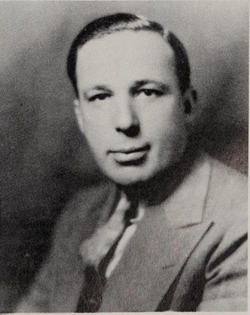 Nate S. Shapero was born in Detroit on September 27, 1892, the son of Samuel Shapero (1862-1897) and Augusta Metzger (1860-1924). He began working at age 12 as a soda-jerk at Liggett store. He studied pharmacy at Ferris Institute in Big Rapids to receive a Ph.B. degree and earned
money playing the violin.
Nate S. Shapero was born in Detroit on September 27, 1892, the son of Samuel Shapero (1862-1897) and Augusta Metzger (1860-1924). He began working at age 12 as a soda-jerk at Liggett store. He studied pharmacy at Ferris Institute in Big Rapids to receive a Ph.B. degree and earned
money playing the violin.
He served in the Navy as a pharmacist mate during the First World War. In 1918, he opened his first drug store as the Economical Drug Company in Detroit. In October 1931, the company was merged with the Cunningham Drug store.
Nate was married to Ruth Bernstein (1896-1988) on January 27, 1925, and had two children.
He was president of Cunningham Drug Stores with more than a hundred and seventy branches. The company expanded to have its own laundry, to make its own brand of ice cream, and had a photo finishing department. He awarded scholarships for workers to attend Wayne University or the Detroit Institute of Technology.
CHASE MANHATTAN MUSEUM BRENNER EXHIBIT
Speaking of the Chase Manhattan Bank Money Museum, former curator Gene Hessler recalls an exhibit he assembled of Victor David Brenner's work. He passed along scans of a circa 1971 Coin World story. Impressive gathering of material - and numismatic personalities; pictured are Chief Engraver Frank Gasparro, Gene, Dick Johnson, and Irwin Stoff. -Editor
COL. GREEN AND THE INVERTED JENNYS
Dave Schenkman writes:
"Your mention of the Inverted Jenny stamp in the latest E-Sylum reminded me of a column I wrote for The Numismatist several years ago. Col. Green, who owned all five 1913 Liberty Head Nickels, also owned a full sheet of the stamps."
Thanks. Nothing exceeds like excess! Dave passed along the article, and here's an excerpt. -Editor
DAVID SCHENKMAN INTERVIEW, PART FOUR
Greg Bennick's latest interview for the Newman Numismatic Portal is with token expert David Schenkman. Here's the fourth of six parts, where Dave discusses underappreciated rarities. -Editor
Greg Bennick: I just love the fact that these things spoke from history and spoke with history in the modern day. So, do you specialize, would you say, most in tokens and medals as I think you do, or is it also counterstamps? Is it also the Civil War tokens? I mean are you sort of a master and jack of all trades, as it were, or do you find yourself specializing in one of those areas?
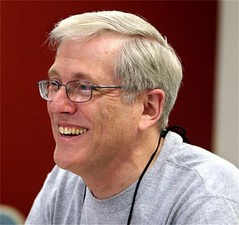 David Schenkman: I don't consider myself a master of anything. I don't collect Civil War
tokens, although I have some. I collect information about them. I've collected a lot of things
over the years, including counterstamps, which I no longer collect, but I tend to lose interest in a
topic after I write a book about it. (laughter) And so I've sold several collections over the years.
You termed counter stamps as a last frontier or one of them, and that's very true. I consider two
of the most unappreciated areas of tokens right now: two types of tokens that were issued for
very short periods of time, not long after the Civil War. And I'll tell you why I consider them so
underrated.
David Schenkman: I don't consider myself a master of anything. I don't collect Civil War
tokens, although I have some. I collect information about them. I've collected a lot of things
over the years, including counterstamps, which I no longer collect, but I tend to lose interest in a
topic after I write a book about it. (laughter) And so I've sold several collections over the years.
You termed counter stamps as a last frontier or one of them, and that's very true. I consider two
of the most unappreciated areas of tokens right now: two types of tokens that were issued for
very short periods of time, not long after the Civil War. And I'll tell you why I consider them so
underrated.
One of these two types is the hard rubber token. Tokens were made of hard rubber, primarily from the Civil War years through the early 1880s. They were not struck, they were made in presses; it’s kind of like a waffle iron type thing, and they hold up very well. And I cataloged those a number of years ago, and there's only a few hundred known ones. And every once in a while, an unlisted one pops up, but not very often. But these tokens are very under collected. And I think one of the reasons why is that you have to buy a book to know what you're doing with them. And so, people don't tend to want to spend the money for a book if they only have one or two of the tokens.
CIRCA 1981 ANACS GRADING CERTIFICATES
Pittsburgh coin dealer Eddie Lowy posted on Facebook photos of two circa 1981 ANACS grading certificates issued to the Steve Ivy Rare Coin Co. Great hobby history. -Editor
DAVISSONS E-AUCTION 48: ROMAN PORTRAITS
Davisson's Ltd. published an email to clients this week highlighting several Roman portrait coins in their upcoming sale. Great coins! -Editor
E-Auction 48 closes in two weeks, on Wednesday, December 6th!
The selection of fine Roman portraits featured in our ancient section is in large part a continuation of the collection offered in our last sale – one carefully assembled by a long-time collector and client with an eye for artistry and quality. With the help of another fine consignment, we are offering examples from a significant portion of post-Severan Roman rulers.
A few examples are pictured below, but to survey the entire selection of great portraits be sure to peruse the entire Roman offering. And stay tuned! We will be back after the holiday with highlights from the rest of the sale.
THE BOOK BAZARRE
WAYNE'S NUMISMATIC DIARY: NOVEMBER 26, 2023
On Tuesday, November 21, 2023 I left work and drove through a rainstorm and rush-hour traffic to J. Gilbert's Steakhouse in McLean, VA for the latest dinner of my Northern Virginia numismatic social group, Nummis Nova. Roger Burdette was our host and we had a small room at the front of the restaurant. It was soon filled with me and Roger, Robert Hoppensteadt, Jon Radel, Wayne Herndon, my guest Jonas Denenberg, Lorne LaVertu, Mike Packard, Chris Neuzil, Steve Bishop, and last but not least, Julian Leidman.
Regulars Eric Schena, Tom Kays and Dave Schenkman had come down with colds and were unable to attend.
It was a really tight room and I was hemmed in and didn't get an opportunity to stand and take our usual group photo. But here are some shots I took on the way out. Nice place. No numismatic artwork, but how about some nice stamps?
MUSEUM RECLASSIFIES EMPEROR ELAGABALUS
We've touched on this topic before (see the 2018 article linked below). This BBC News article discusses how the North Hertfordshire Museum will now refer to emperor Elagabalus with female pronouns. -Editor
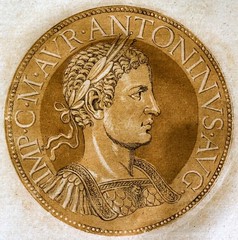 A museum is to relabel its display about a Roman emperor after concluding that he was in fact a trans woman.
A museum is to relabel its display about a Roman emperor after concluding that he was in fact a trans woman.
North Hertfordshire Museum will now refer to emperor Elagabalus with the female pronouns of she and her.
It comes after classical texts claim the emperor once said "call me not Lord, for I am a Lady".
ROYAL CANADIAN MINT ISSUES CHARLES COINS
The Royal Canadian Mint has issued coins featuring King Charles III. -Editor
It seems the long-forgotten penny is of some use after all. This afternoon, the Royal Canadian Mint announced they’d be bringing back the one-cent coin just so they’d have some place to put the image of King Charles III.
Mennonites, in particular, are looking forward to the new coinage.
54TH JEWISH-AMERICAN HALL OF FAME MEDAL ISSUED
The 54th Jewish-American Hall of Fame medal has been announced. Here's the press release, and a discount for E-Sylum readers. -Editor
Photographer, Artist, Inventor, Author and Explorer Solomon Carvalho
The 54th medal in the Jewish-American Hall of Fame series honors Solomon Nunes Carvalho, who was born in 1815 in Charleston, South Carolina into a Sephardic family. His ancestors were expelled from Spain in 1492. Carvalho was an early photographer, a talented artist, an inventor, author and explorer.
The Solomon Carvalho medals are trapezoidal shaped, 2 inches diameter, weighing 2 oz., and individually serial numbered on the edge. No more than 100 bronze, 75 silver-plated and 35 gold-plated medals will be made and offered for contributions of $35, $100 and $145 respectively, plus $10 for shipping. To order, call (818) 225-1348. Mention this publication when you order and you can take a 20% discount. Money raised will help fight antisemitism.
FREIGELD: MONEY THAT EXPIRES
In the Great Depression a number of communities around the U.S. and the world experimented with stamp scrip - notes that required that stamps be affixed for each transaction (or at regular intervals) in order for the scrip to remain valid. This scheme ensured that the notes would continue to circulate like hot potatoes, increasing the velocity of money and benefiting the overall economy. Money of the latter form (expiring without periodic stamping) was promoted by economist Silvio Gesell (1862–1930) and put into practice in 1932.
A new article examines Gesell's "Freigelt" and asks whether "society and the economy would be better off if money was a perishable good." Here's a short excerpt, where I've reordered some paragraphs for readability here. See the complete article online for more.
Found via News & Notes from the Society of Paper Money Collectors (Volume IX, Number 22, November 14, 2023). See also the articles linked below. -Editor
As it evolved, money became increasingly symbolic. Early paper money acted as an IOU and could always be exchanged for metallic coins of various values. In the late 13th century, however, the Mongol emperor Kublai Khan invented paper money that was not backed by anything. It was money because the emperor said it was money. People agreed. In the intervening centuries, money has conjured more fantastic leaps of faith with the invention of the stock market, centralized banking and, recently, cryptocurrencies.
THE CASHLESS CONSPIRACY DISTRACTION
Here's an interesting discussion on the march to a cashless society and the fearmongering around it coming from both the right and the left. Can't we all just get along? And focus on a common goal? Brett Scott is the author of Cloudmoney: Why the War on Cash Endangers Our Freedom (2022) -Editor
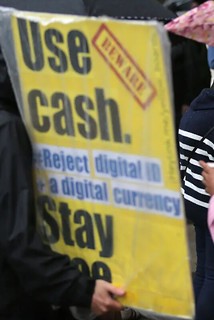 Four centuries ago, a woman named Else Knutsdatter was executed in Vardø, a small coastal town in Norway. She was accused of having used witchcraft to raise an ocean storm that claimed the lives of 40 men. She wasn’t the only one to fall victim to 17th-century folk who – in the absence of other explanations – could be convinced that disasters were conjured by malevolent sorcerers. Ninety others were executed for conspiring to produce the same storm.
Four centuries ago, a woman named Else Knutsdatter was executed in Vardø, a small coastal town in Norway. She was accused of having used witchcraft to raise an ocean storm that claimed the lives of 40 men. She wasn’t the only one to fall victim to 17th-century folk who – in the absence of other explanations – could be convinced that disasters were conjured by malevolent sorcerers. Ninety others were executed for conspiring to produce the same storm.
Today, we know that physics and atmospheric pressures produced those storms. So, in the realm of weather, we’ve moved to systemic thinking, where bad things don’t need to be explained with reference to bad actors. When it comes to descriptions of politics and economics, the progress is not so unequivocal. Do bad things like climate change, conflict and corporate greed happen because powerful politicians and CEOs construct it like that, or do they emerge in the vacuum of human agency, in the fact that nobody’s actually in control? This is a question that confronts me in the campaign to protect the physical cash system against the digital takeover by Big Finance and Big Tech.
NFL THANKSGIVING COIN-TOSS KERFUFFLE
Twenty-five years ago, a coin-toss controversy made for one of the wildest Thanksgiving Days in NFL history. -Editor
Tens of millions were watching 25 years ago, on what may have been the most memorably weird, confusing and simply thrilling day of Thanksgiving games in the NFL's history. On Nov. 26, 1998, the Lions beat the Pittsburgh Steelers, 19-16, in overtime in a game that included a coin flip that was botched to such a degree that it earned an eternal spot in blooper reels, prompted amateur sleuths to enhance the television audio to get to the bottom of the fiasco, forced the NFL to enact an immediate rule change and, quite possibly, caused the Steelers' season to go kaput.


